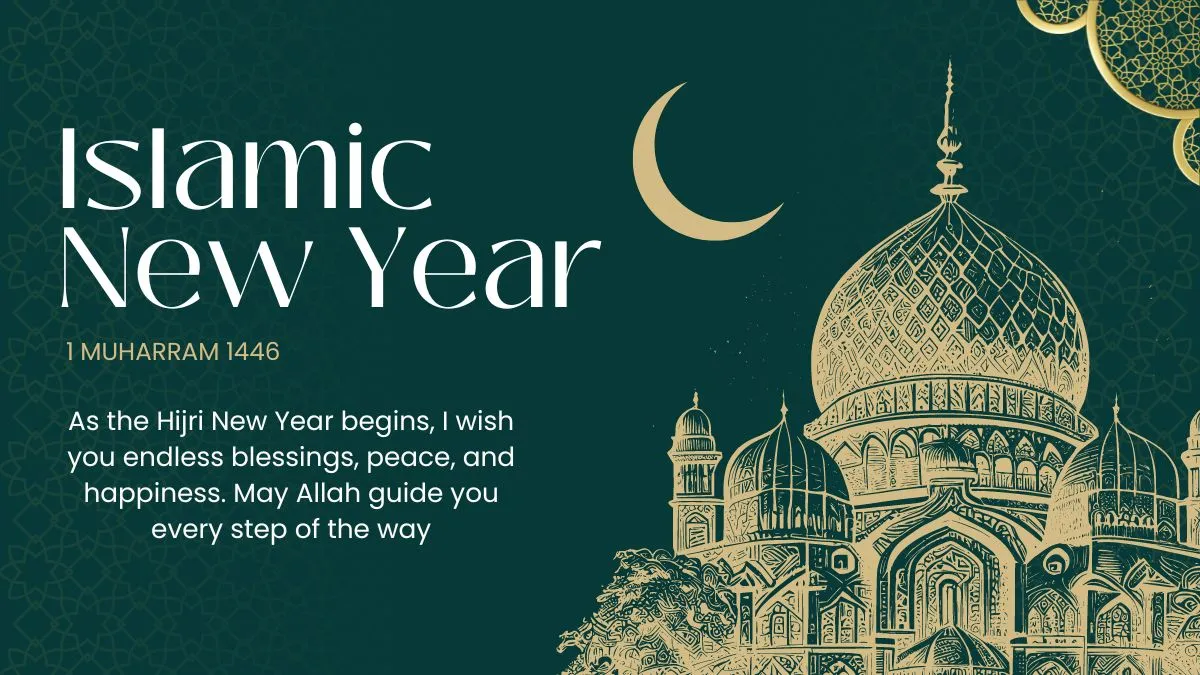Islamic New Year: Significance and Traditions
The Islamic New Year, also known as the Hijri New Year or the Arabic New Year, marks the beginning of the Islamic lunar calendar. It is a significant event for Muslims around the world, commemorating the migration (Hijra) of the Prophet Muhammad and his followers from Mecca to Medina in 622 CE, which led to the establishment of the first Muslim community. This event signifies the start of the Islamic calendar, with the year of the migration being designated as year 1 (1 AH, Anno Hegirae).
Date and Calendar
The Islamic New Year falls on the first day of Muharram, the first month of the Islamic lunar calendar. Unlike the Gregorian calendar, which is solar, the Islamic calendar is based on the moon's cycles. As a result, the Islamic New Year does not fall on the same Gregorian date each year but shifts about 10-12 days earlier annually.
Observance and Traditions
The way the Islamic New Year is observed varies significantly across different cultures and communities. Here are some common practices:
-
Reflection and Remembrance:
- Muslims use this time for introspection, recalling the hardships faced by the Prophet Muhammad and his followers during the Hijra.
- Many also reflect on their own lives, seeking ways to improve spiritually and morally.
-
Prayer and Fasting:
- Special prayers and readings from the Quran are held in mosques.
- Some Muslims observe fasting, particularly on the 10th day of Muharram, known as Ashura, which holds additional historical significance.
-
Charity and Good Deeds:
- Acts of charity and helping those in need are emphasized. It is a time for Muslims to engage in good deeds and show kindness to others.
-
Family and Community Gatherings:
- Families and communities often gather for communal meals and to share stories about the history of Islam and the significance of the Hijra.
-
Cultural Celebrations:
- In some countries, the Islamic New Year is marked by cultural festivals, parades, and special events. These celebrations can include traditional music, poetry, and performances that highlight Islamic history and culture.
Significance of Muharram and Ashura
Muharram, the first month of the Islamic calendar, is one of the four sacred months in Islam. It is a time for prayer, fasting, and seeking forgiveness. The 10th day of Muharram, known as Ashura, holds special significance for different Muslim sects:
- Sunni Muslims: For Sunni Muslims, Ashura commemorates the day Noah left the Ark and the day Moses was saved from the Egyptians by the splitting of the sea. Fasting on this day is recommended but not obligatory.
- Shia Muslims: For Shia Muslims, Ashura is a day of mourning for the martyrdom of Husayn ibn Ali, the grandson of Prophet Muhammad, at the Battle of Karbala. This event is central to Shia belief and is marked by mourning rituals, reenactments of the battle, and public expressions of grief.
Modern Observances
In modern times, the Islamic New Year is observed with a blend of religious devotion and cultural traditions. In many Muslim-majority countries, it is a public holiday, and various events and programs are organized to mark the occasion. Additionally, Islamic New Year is a time for Muslims living in non-Muslim-majority countries to gather and celebrate their heritage and faith.
Conclusion
The Islamic New Year is a deeply significant time for Muslims around the world, providing an opportunity for spiritual renewal, reflection on Islamic history, and community bonding. Whether through prayer, fasting, acts of charity, or cultural celebrations, the Islamic New Year fosters a sense of unity and faith among Muslims as they honor their past and look forward to the future.


